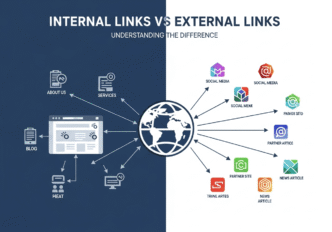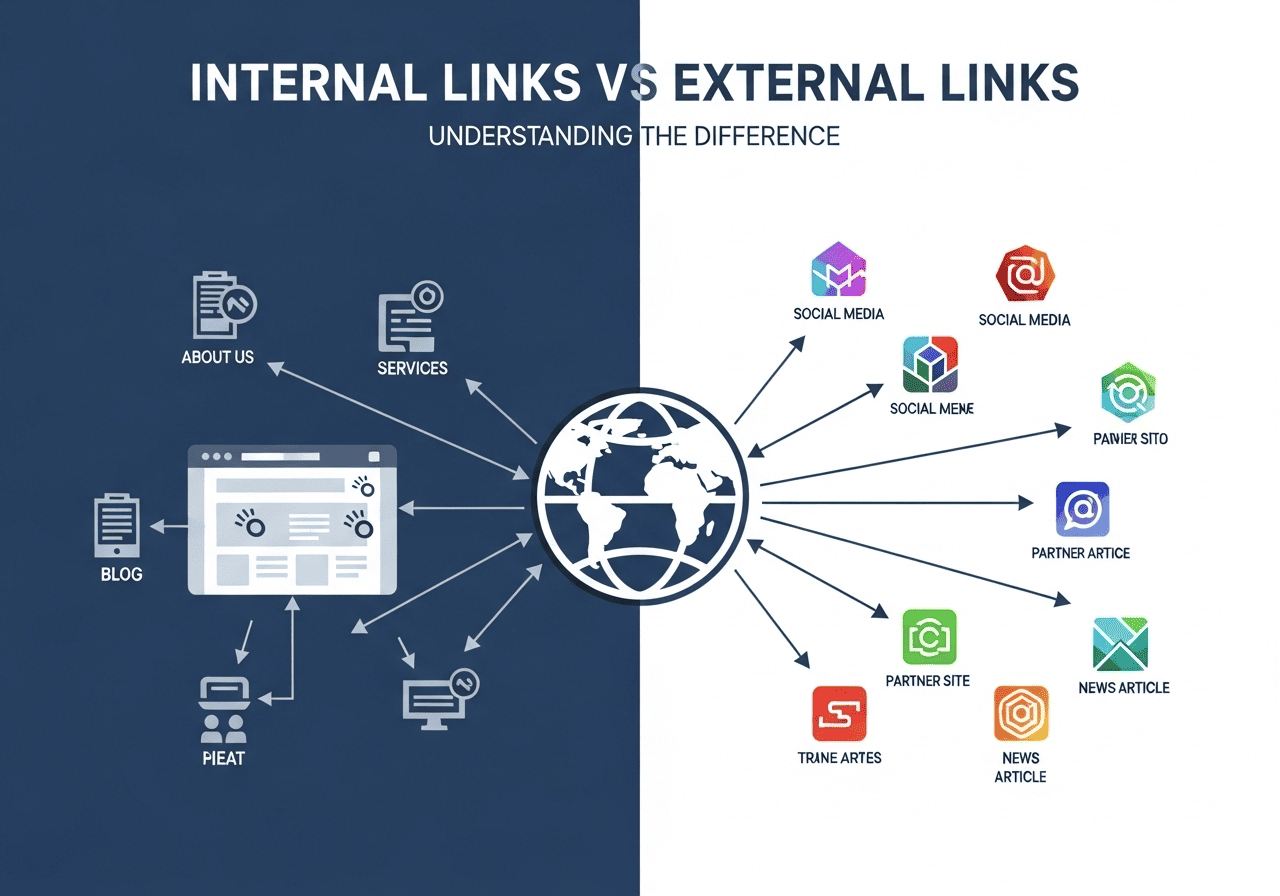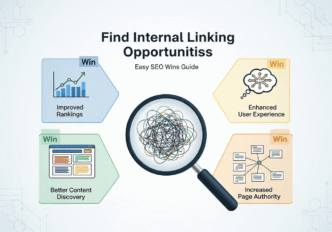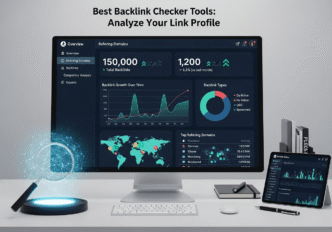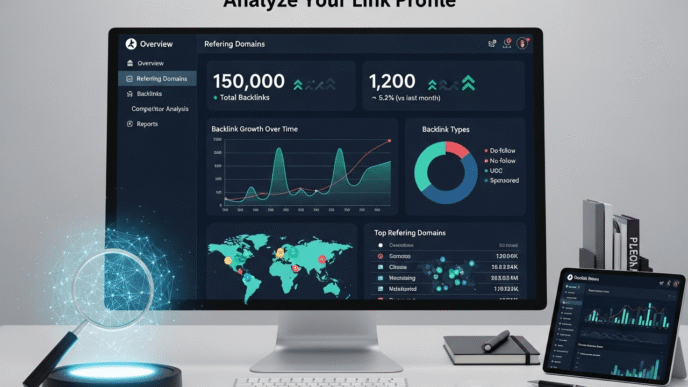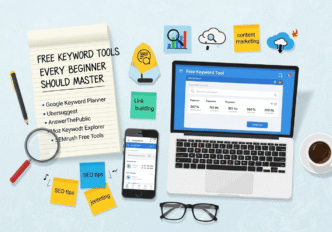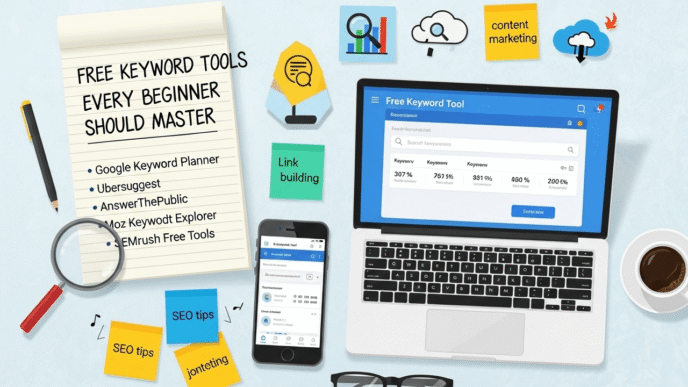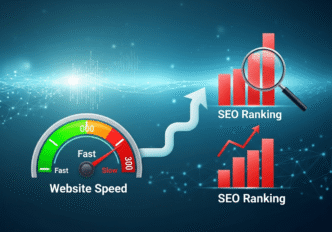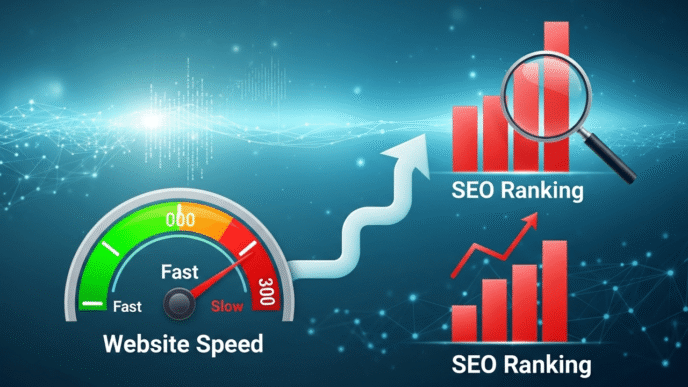Picture this: You’re reading an amazing blog post about your favorite topic, and suddenly you click on a blue link. Sometimes it takes you to another page on the same website, and other times it whisks you away to a completely different site. Ever wondered why this happens and what it means for your SEO strategy?
Understanding internal vs external links is like learning the difference between staying in your own neighborhood versus visiting other cities. Both have their place, but knowing when and how to use each type can make or break your website’s search engine performance. If you’ve ever felt confused about link types and their impact on your domain authority, you’re definitely not alone!
In this comprehensive guide, we’ll break down everything you need to know about the difference between internal and external links, when to use each type, and how to create a balanced linking strategy that search engines absolutely love. Trust me, by the end of this post, you’ll be linking like a pro and wondering why you ever found this confusing in the first place!
Table of Contents
Toggle
What Are Internal vs External Links? (The Simple Breakdown)
Let’s start with the basics and clear up any confusion about internal vs external links once and for all.
Internal links are hyperlinks that connect different pages within your own website. Think of them as hallways in your house – they help visitors move from room to room (page to page) without ever leaving your property.
External links (also called outbound links) are hyperlinks that point from your website to a completely different domain. These are like bridges connecting your house to other neighborhoods – they send visitors away from your site to explore other websites.
The House Analogy That Makes Everything Clear
Imagine your website is a beautiful house:
- Internal links = The hallways, stairs, and doorways inside your house
- External links = The pathways leading from your house to other houses
- Inbound links (backlinks) = The pathways from other houses leading to yours
This simple visualization helps explain why both link types serve different purposes in your SEO strategy. You need good internal navigation to help people explore your house, but you also want to connect with the broader neighborhood!
What’s the Difference Between Internal and External Links?
The difference between internal and external links goes way beyond just where they point. Let’s break down the key distinctions that matter for your SEO success:
| Aspect | Internal Links | External Links |
|---|---|---|
| Destination | Same domain/website | Different domain/website |
| User Experience | Keeps visitors on your site | Sends visitors away |
| SEO Impact | Distributes link equity internally | Shares link juice with other sites |
| Control Level | 100% under your control | Dependent on external sites |
| Purpose | Improve navigation & page authority | Provide additional value & credibility |
| Risk Level | Very low | Medium (depends on destination quality) |
| Cost | Free (your own content) | Free but gives away potential traffic |
Why These Differences Matter for Your SEO Strategy
Understanding these distinctions is crucial because each link type serves a specific purpose in your overall SEO approach. Internal links help you build a strong foundation within your site, while external links help you connect with the broader web ecosystem.
Understanding internal vs external links is crucial for building a robust SEO foundation. While internal links strengthen your website’s structure and user experience, external links demonstrate authority and credibility to search engines. Our comprehensive visual guide to internal linking SEO provides interactive tools and data-driven insights to help you master this essential strategy.
💡 Pro Tip: The most successful websites use a strategic mix of both internal and external links. A study by Ahrefs found that pages with a good balance of both link types tend to rank higher than those that rely heavily on just one type.
How Do Internal Links vs Outbound Links Affect SEO Differently?
Internal links vs outbound links have completely different impacts on your search engine optimization. Let’s dive into how each type affects your rankings and why you need both.
Internal Links: Building Your SEO Empire
Internal links are your secret weapon for link equity distribution. Here’s what they do for your SEO:
Distribute Page Authority: When a high-authority page on your site links to other pages, it passes along some of its ranking power. It’s like a popular kid at school introducing their friends – instant credibility boost!
Improve Crawlability: Search engine bots use internal links to discover and index your content. Without proper internal linking, even your best content might remain invisible to Google.
Enhance User Signals: When visitors spend more time exploring your site through internal links, it sends positive signals to search engines about your content quality.
External Links: Building Trust and Authority
Outbound links serve a different but equally important SEO purpose:
Establish Credibility: Linking to high-quality, authoritative sources shows search engines (and users) that you’ve done your research and provide valuable, well-sourced content.
Improve User Experience: Sometimes the best way to help your readers is to point them toward additional resources, even if they’re on other websites.
Build Relationships: Strategic external linking can lead to reciprocal links and improved relationships within your industry.
🔥 Expert Insight: According to a study by Reboot Online, pages that include 2-3 high-quality external links to authoritative sources tend to rank 25% higher than pages with no external links. The key is quality over quantity!
When Should You Use Internal vs External Links?
Knowing when to use internal vs external links is like knowing when to recommend your own restaurant versus sending someone to the amazing bakery down the street. Both have their place in creating the best possible experience for your visitors.
Perfect Scenarios for Internal Links
Use internal links when you want to:
Guide Users Through Your Content Journey
- Link from blog posts to related service pages
- Connect educational content to product pages
- Create clear pathways from awareness to conversion
Boost Underperforming Pages
- Link from high-traffic posts to pages that need more visibility
- Create topic clusters around your main themes
- Distribute link juice to important but buried content
Improve Site Navigation
- Help users discover related content they’ll love
- Reduce bounce rates by providing logical next steps
- Create a better overall user experience
Real-World Example: Neil Patel’s blog masterfully uses internal links to guide readers from educational posts about SEO basics to his advanced SEO tools and services. This strategic approach has helped him build a content empire that generates millions in revenue.
Perfect Scenarios for External Links
Use external links when you want to:
Enhance Content Credibility
- Reference statistics from authoritative sources
- Link to original research or studies
- Cite expert opinions or quotes
Provide Additional Value
- Recommend tools or resources that complement your content
- Share helpful tutorials or guides from other experts
- Offer alternative perspectives on complex topics
Build Industry Relationships
- Reference and link to thought leaders in your field
- Acknowledge sources of inspiration or information
- Participate in the broader conversation within your niche
The Strategic Balance That Works
The most effective internal external link SEO strategy follows the 80/20 rule: approximately 80% internal links and 20% external links. This ratio helps you maintain link equity while still providing comprehensive value to your readers.
What Are the Different Types of Links in SEO?
Understanding all the types of links in SEO is like learning the different tools in a toolbox – each serves a specific purpose and knowing when to use which one makes all the difference.
Internal Link Categories
Navigational Links
- Main menu links
- Footer links
- Breadcrumb navigation
- Category and tag links
Contextual Links
- Links within blog post content
- Related article suggestions
- Author bio links
- Call-to-action links
Structural Links
- Pagination links
- Search result links
- Archive page links
- Sitemap links
External Link Categories
Citation Links
- Links to studies and research
- References to statistics
- Attribution links for quotes or images
- Source documentation links
Resource Links
- Tool recommendations
- Educational content suggestions
- Industry publication references
- Expert blog recommendations
Partnership Links
- Sponsor acknowledgments
- Affiliate program links (with proper disclosure)
- Collaboration mentions
- Guest post author credits
How to Create an Effective Internal External Link SEO Strategy?
Building a winning internal external link SEO strategy is like crafting the perfect recipe – you need the right ingredients in the right proportions, mixed together with skill and patience.
Step 1: Audit Your Current Link Profile
Before you can improve your linking strategy, you need to understand what you’re working with:
Internal Link Audit:
- Use tools like Google Search Console to see which pages have the most internal links
- Identify orphaned pages (pages with no internal links pointing to them)
- Look for opportunities to link from high-authority pages to important but underlinked content
External Link Audit:
- Review your current outbound links to ensure they’re still relevant and functional
- Check that external links point to high-quality, authoritative sources
- Remove or update any broken external links
Step 2: Develop Your Content Clusters
Create topic clusters around your main themes, with comprehensive pillar pages at the center:
Pillar Page Strategy:
- Create in-depth, comprehensive guides on your main topics
- Link all related subtopic posts back to the relevant pillar page
- Use the pillar page to link out to supporting content
Supporting Content Links:
- Connect related subtopic posts to each other when relevant
- Reference comprehensive guides like our Internal Linking SEO: The Underestimated Ranking Power Visual Guide for advanced implementation strategies
Step 3: Implement Strategic External Linking
Quality Over Quantity Approach:
- Link to 2-3 high-authority external sources per long-form post
- Choose sources that genuinely add value to your content
- Ensure external links open in new tabs to keep users on your site
Authority Building:
- Reference industry leaders and authoritative publications
- Link to original research and statistical sources
- Cite expert opinions and quotes with proper attribution
Step 4: Monitor and Optimize Performance
Track Key Metrics:
- Monitor click-through rates on both internal and external links
- Analyze user behavior flow to see how visitors navigate your site
- Track ranking improvements for pages with strategic internal linking
Regular Maintenance:
- Check for broken links monthly
- Update external links if sources change or improve
- Add new internal links when publishing fresh content
🚀 Advanced Strategy: Create a linking matrix spreadsheet that maps out strategic connections between your content pieces. This helps ensure you’re maximizing link equity distribution and creating logical user journeys throughout your site.
Common Mistakes to Avoid with Internal vs External Links
Even seasoned marketers make linking mistakes that can hurt their SEO performance. Here are the most common pitfalls and how to avoid them:
Internal Linking Mistakes That Kill Rankings
Over-Optimization Red Flags:
- Using the exact same anchor text repeatedly
- Cramming too many internal links into short content
- Linking randomly without considering user value
Navigation Nightmares:
- Creating orphaned pages with no internal links
- Using generic anchor text like “click here” or “read more”
- Linking to irrelevant or low-quality internal pages
Technical Trip-Ups:
- Broken internal links (404 errors)
- Redirect chains and loops
- Linking to noindexed pages
External Linking Mistakes That Damage Authority
Quality Control Issues:
- Linking to low-authority or spammy websites
- Not checking if external links are still functional
- Linking to direct competitors without strategic purpose
User Experience Problems:
- Too many external links that send users away
- Not opening external links in new tabs
- Linking to irrelevant external content
SEO Strategy Errors:
- Not using rel=”nofollow” when appropriate (sponsored content, untrusted links)
- Failing to diversify external link sources
- Linking to the same external site repeatedly
Real-World Case Studies: Internal vs External Links Success Stories
Let’s look at some real examples of how strategic linking has transformed website performance:
Case Study 1: The B2B SaaS Transformation
The Challenge: A B2B software company had great individual blog posts but terrible internal linking. Their best content was buried, and users couldn’t find their way to conversion pages.
The Strategy:
- Created topic clusters around their main features
- Added strategic internal links from educational posts to product pages
- Implemented a hub-and-spoke model with comprehensive pillar content
The Results:
- 73% increase in organic traffic within 6 months
- 45% improvement in average session duration
- 28% boost in demo sign-ups from blog traffic
Case Study 2: The Authority Building Success
The Challenge: A health and wellness blog struggled with credibility issues. Google wasn’t ranking their content highly because it lacked authoritative backing.
The Strategy:
- Added 2-3 high-quality external links to medical journals in each post
- Referenced CDC, WHO, and peer-reviewed research consistently
- Maintained strong internal linking to keep users engaged
The Results:
- 156% increase in average ranking position
- Featured in Google’s “Top Stories” section multiple times
- Gained trust signals that boosted overall domain authority
Case Study 3: The E-commerce Internal Linking Win
The Challenge: An online retailer had thousands of products but poor internal navigation. Customers couldn’t discover related products, leading to low average order values.
The Strategy:
- Implemented “frequently bought together” internal linking
- Created category-to-product internal link optimization
- Added contextual links from blog content to relevant product pages
The Results:
- 67% increase in average order value
- 34% improvement in pages per session
- 89% boost in product discovery rates
Advanced Linking Strategies for Maximum SEO Impact
Ready to take your linking game to the next level? These advanced strategies separate the pros from the amateurs:
The Content Cluster Amplification Method
Instead of random internal linking, create strategic content clusters:
Hub Page Optimization:
- Create comprehensive pillar pages (3,000+ words)
- Link to 8-12 supporting articles from each hub page
- Ensure all supporting content links back to the hub
Cluster Interconnection:
- Link supporting articles to each other when relevant
- Create logical user journeys between related topics
- Use varied anchor text that describes the destination content
The Authority Ladder Technique
Build topical authority through strategic external linking:
Tier 1 Sources: Link to the absolute best authorities in your field (Harvard, MIT, government sites) Tier 2 Sources: Reference well-known industry publications and thought leaders Tier 3 Sources: Cite emerging experts and innovative perspectives
This approach shows search engines you understand the authority hierarchy in your niche.
The Link Velocity Optimization
Gradual Implementation:
- Don’t add 50 internal links to a page overnight
- Gradually build your internal link profile over time
- Add new links as you publish related content
Natural Growth Pattern:
- Follow industry linking patterns and best practices
- Monitor competitor linking strategies for inspiration
- Maintain consistent quality standards for all links
Tools and Resources for Link Management
Managing your internal vs external links effectively requires the right tools. Here are the essential resources every SEO professional should know:
Free Link Analysis Tools
| Tool | Best For | Key Features |
|---|---|---|
| Google Search Console | Internal link monitoring | Links report, crawl errors |
| Google Analytics | User behavior tracking | User flow, page connections |
| Screaming Frog (Free version) | Basic site auditing | Link analysis, broken link detection |
| Ahrefs Webmaster Tools | External link tracking | Backlink analysis, referring domains |
Premium Link Management Solutions
Comprehensive SEO Platforms:
- Ahrefs: Best for external link analysis and opportunities
- SEMrush: Excellent for competitor link research
- Moz: Great for domain authority tracking and link metrics
Specialized Link Tools:
- LinkStorm: Advanced internal link automation
- Link Whisper: WordPress internal linking plugin
- Monitor Backlinks: External link monitoring and alerts
WordPress Plugins for Better Linking
Internal Linking Optimization:
- Yoast SEO (basic internal link suggestions)
- Rank Math (advanced linking features)
- Internal Link Juicer (automated internal linking)
External Link Management:
- WP External Links (external link customization)
- Pretty Links (link cloaking and tracking)
- ThirstyAffiliates (affiliate link management)
How to Measure the Success of Your Linking Strategy?
You can’t improve what you don’t measure. Here’s how to track the success of your internal vs external links strategy:
Key Performance Indicators (KPIs)
Internal Link Success Metrics:
- Average session duration (should increase)
- Pages per session (should increase)
- Bounce rate (should decrease)
- Internal link click-through rates
- Organic traffic distribution across pages
External Link Success Metrics:
- Referral traffic from external sources
- Brand mentions and citation tracking
- Domain authority improvements over time
- Expert outreach response rates
Monthly Reporting Framework
Week 1: Internal link performance analysis Week 2: External link quality audit Week 3: User behavior flow assessment Week 4: Competitor link strategy research
Advanced Analytics Setup
Understanding how your linking strategy performs requires proper tracking and measurement. Many successful websites use sophisticated analytics to optimize their approach, similar to the methodologies outlined in our interactive SEO dashboard that demonstrates real-world linking performance metrics.
Google Analytics 4 Configuration:
- Set up custom events for internal link clicks
- Create conversion funnels showing user journeys
- Track assisted conversions from linking strategies
Search Console Integration:
- Monitor internal link distribution reports
- Track impression and click improvements
- Identify content discovery opportunities
The Future of Internal vs External Links in SEO
As search engines become more sophisticated, the difference between internal and external links will continue to evolve. Here’s what to expect:
AI and Machine Learning Impact
Smart Link Analysis: Search engines are getting better at understanding link context and relevance, making strategic linking even more important.
User Intent Matching: Future algorithms will likely reward links that genuinely help users achieve their goals, whether internal or external.
Quality Over Quantity: The trend toward rewarding fewer, higher-quality links will continue to accelerate.
Voice Search and Featured Snippets
Answer-Focused Linking: With voice search growth, links that provide direct answers to questions will become more valuable.
Source Attribution: Search engines will increasingly reward content that properly cites authoritative external sources.
Mobile-First Considerations
Touch-Friendly Linking: As mobile usage dominates, link placement and accessibility become even more critical.
Page Speed Impact: Every link affects loading time, making strategic link pruning more important than ever.
🔮 Future Prediction: By 2026, search engines will likely use AI to automatically evaluate link quality and relevance, making strategic, human-curated linking even more valuable than automated approaches.
Your Action Plan: Implementing Better Link Strategy Today
Ready to transform your internal external link SEO strategy? Here’s your step-by-step action plan:
Week 1: Assessment and Planning
Day 1-2: Audit your current link profile using Google Search Console Day 3-4: Identify your top 10 most important pages that need more internal links Day 5-7: Research external authority sources in your niche
Week 2: Internal Link Optimization
Day 1-3: Add 2-3 strategic internal links to your highest-traffic posts Day 4-5: Create a content cluster map for your main topics Day 6-7: Implement internal links to boost underperforming pages
Week 3: External Link Enhancement
Day 1-3: Add authoritative external sources to your most important content Day 4-5: Update any broken or outdated external links Day 6-7: Research and build relationships with potential link partners
Week 4: Monitoring and Optimization
Day 1-3: Set up tracking for your new linking strategy Day 4-5: Analyze initial performance data Day 6-7: Plan next month’s linking improvements
Essential Tools to Get Started
Free Starter Kit:
- Google Search Console for link monitoring
- Google Analytics for user behavior tracking
- Screaming Frog free version for basic auditing
Intermediate Toolkit:
- Ahrefs or SEMrush subscription for advanced analysis
- Link building outreach tools
- Content planning and cluster mapping tools
Monthly Maintenance Checklist
Internal Link Maintenance:
- [ ] Check for new internal linking opportunities
- [ ] Fix any broken internal links
- [ ] Update anchor text for better optimization
- [ ] Add internal links to new content
External Link Maintenance:
- [ ] Verify all external links are still functional
- [ ] Update external sources if better ones become available
- [ ] Add external links to establish credibility in new content
- [ ] Monitor external link performance and user engagement
Conclusion: Mastering the Art of Strategic Linking
Understanding internal vs external links isn’t just about knowing the technical difference – it’s about creating a strategic linking ecosystem that serves both users and search engines. The most successful websites treat linking as an art form, carefully balancing internal link equity distribution with external authority building.
Remember, internal links are your foundation – they help you build a strong, interconnected website that keeps users engaged and distributes ranking power effectively. External links are your bridges to the broader web community – they establish credibility, provide additional value, and show search engines you’re part of the quality neighborhood.
The magic happens when you combine both strategically. Internal links keep users in your ecosystem longer, while external links build the trust and authority that help you rank higher. It’s not about choosing one over the other – it’s about using each type purposefully and strategically, as demonstrated in our comprehensive linking strategy visualization.
Your next step is simple: Choose one high-traffic page on your website and add two strategic internal links and one high-authority external link. Monitor the performance over the next 30 days, and you’ll start to see firsthand how powerful strategic linking can be.
For more advanced strategies and interactive tools to optimize your linking approach, explore our data-driven internal linking resource that includes practical implementation frameworks and real-time performance calculators.
The difference between websites that struggle and those that dominate search results often comes down to one thing: strategic linking. Now you have the knowledge – it’s time to put it into action.
Frequently Asked Questions About Internal vs External Links
Q: What’s the main difference between internal and external links? A: Internal links connect pages within your own website, while external links point from your site to other domains. Internal links keep users on your site and distribute page authority internally, while external links send users away but can build credibility and relationships.
Q: Should I use more internal or external links? A: A good balance is approximately 80% internal links and 20% external links. Focus on internal links to build your site’s authority structure, but include quality external links to establish credibility and provide additional value.
Q: Do external links hurt my SEO by sending users away? A: Quality external links actually help your SEO by establishing credibility and showing search engines you provide well-researched, valuable content. The key is linking to high-authority sources and opening external links in new tabs.
Q: How many internal links should I include per blog post? A: For blog posts around 1,000 words, aim for 3-5 strategic internal links. For longer, pillar content (3,000+ words), you can include 8-12 internal links. Always prioritize relevance and user value over hitting specific numbers.
Q: What’s the difference between outbound links and external links? A: Outbound links and external links are the same thing – they’re links from your website pointing to other domains. Some people also call them “outgoing links.”
Q: Should external links open in new tabs? A: Yes, it’s generally best practice to have external links open in new tabs (target=”_blank”) so users don’t completely leave your website. This helps maintain engagement while still providing valuable external resources.
Q: Can too many internal links hurt my SEO? A: Yes, excessive internal linking can dilute link equity and hurt user experience. Google’s John Mueller has noted that too many links on a page can reduce the value of each individual link. Focus on quality and relevance over quantity.
Q: How do I know if my external links are helping my SEO? A: Monitor metrics like referral traffic, user engagement, time on site, and overall ranking improvements. External links to authoritative sources typically help establish topical authority and can improve your content’s credibility signals.
Q: What’s link equity and how does it work with internal links? A: Link equity (also called “link juice”) is the ranking power that passes from one page to another through links. Internal links help distribute this power throughout your website, boosting the authority of important pages.
Q: Should I use nofollow on internal links? A: Generally, no. Internal links should almost always be dofollow to pass link equity throughout your site. Only use nofollow on internal links in very specific situations, like links to login pages or terms of service pages that you don’t want to pass authority to.

